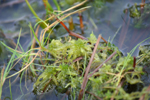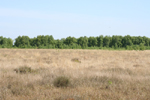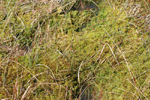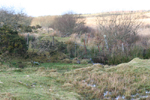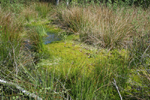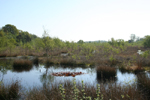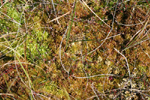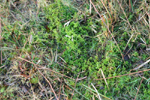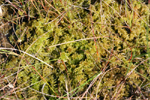Julia van Winden

PhD Thesis Defence: 4 November 2011 14.30
Academiegebouw Utrecht, Domplein 29, Utrecht
Methane cycling in peat bogs:
Environmental relevance of methanotrophs
revealed by microbial lipid chemistry
mail@juliavanwinden.nl
Supervisor: Gert-Jan Reichart
Promotor: Jaap Sinninghe Damsté
Department of Earth Sciences, Utrecht University,
The Netherlands
About methane cycling in peat bogs:
Sphagnum, peat moss, dominates in rain-fed raised bogs, where nutrients are solely supplied via precipitation. To gain nutrients, Sphagnum efficiently transfers nutrients for protons, acidifying its own environment. Due to the low pH and low nutrient availability, degradation of the organic matter occurs very slowly. Peat bogs dominated by Sphagnum are therefore important net accumulators of organic matter, storing up to 30% of the carbon sequestered in soils globally. This is three times as much as the amount of carbon stored in tropical rainforests. Wetlands in general are responsible for 80% of the natural methane flux to the atmosphere, a strong greenhouse gas. Most of the methane produced in peat bogs, however, is consumed by methanotrophic bacteria. Molecular probes have shown that these methanotrophs live as partly endophytic symbionts in Sphagnum mosses from the Mariapeel in The Netherlands (Raghoebarsing et al., Nature, 2005). To gain insight into the significance of the symbiosis between methanotrophic bacteria and Sphagnum on a global scale, Sphagnum mosses from peatlands all over the world were collected and tested for methane oxidation activity. The importance of aerobic methane oxidation for the availability of CO2 for photosynthesis by Sphagnum is established by monitoring the methane-derived label incorporation into specific lipids of Sphagnum (triterpenoids, sterols, n-alkanes). This is done in close collaboration with Nardy Kip from thePublications
N. Kip#, J.F. van Winden#, Y. Pan, L. Bodrossy, G.-J. Reichart, A.J.P. Smolders, M.S.M. Jetten, J.S. Sinninghe Damsté and H.J.M. Op den Camp (2010) Global prevalence of methane oxidation by symbiotic bacteria in peat moss ecosystems. Nature Geoscience 3, 617-621. #Contributed equallyJ.F. van Winden, N. Kip, G.-J. Reichart, M.S.M. Jetten, H.J.M. Op den Camp and J.S. Sinninghe Damsté. (2010) Lipids of symbiotic methane-oxidizing bacteria in peat moss studied using stable carbon isotopic labelling. Organic Geochemistry 41, 1040-1044.
A.V. Brader, J.F. van Winden, S.J.P. Bohncke, C.J. Beets, G.J. Reichart and J.W. de Leeuw (2010) Fractionation of hydrogen, oxygen and carbon isotopes in n-alkanes and cellulose of three Sphagnum species. Organic Geochemistry 41, 1277-1284.
N. Kip, W. Ouyang, A.A. Raghoebarsing, J.F. van Winden, L. van Niftrik, A. Pol, Y. Pan, L. Bodrossy, E.G. van Donselaar, G.J. Reichart, M.S.M. Jetten, J.S. Sinninghe Damsté and H.J.M. op den Camp (2011) Detection, isolation and characterization of acidophilic methanotrophs from Sphagnum mosses. Applied and Environmental Microbiology, DOI: 10.1128/AEM.05017-11.
Selected Presentations
Oral presentations:BIOGEOMON, Helsinki, 2009, Award Winning
IMOG, Bremen, 2009
NSG, Amsterdam, 2009
Invited lecture, Newcastle University, 2009
Darwin Days & NAC10, Veldhoven, 2010
EGU, Vienna, 2010
Posters:
Darwin Days & NAC9, Veldhoven, 2008, Award Winning
NSG, Utrecht, 2008, TNO-poster Award
EGU, Vienna, 2009.
